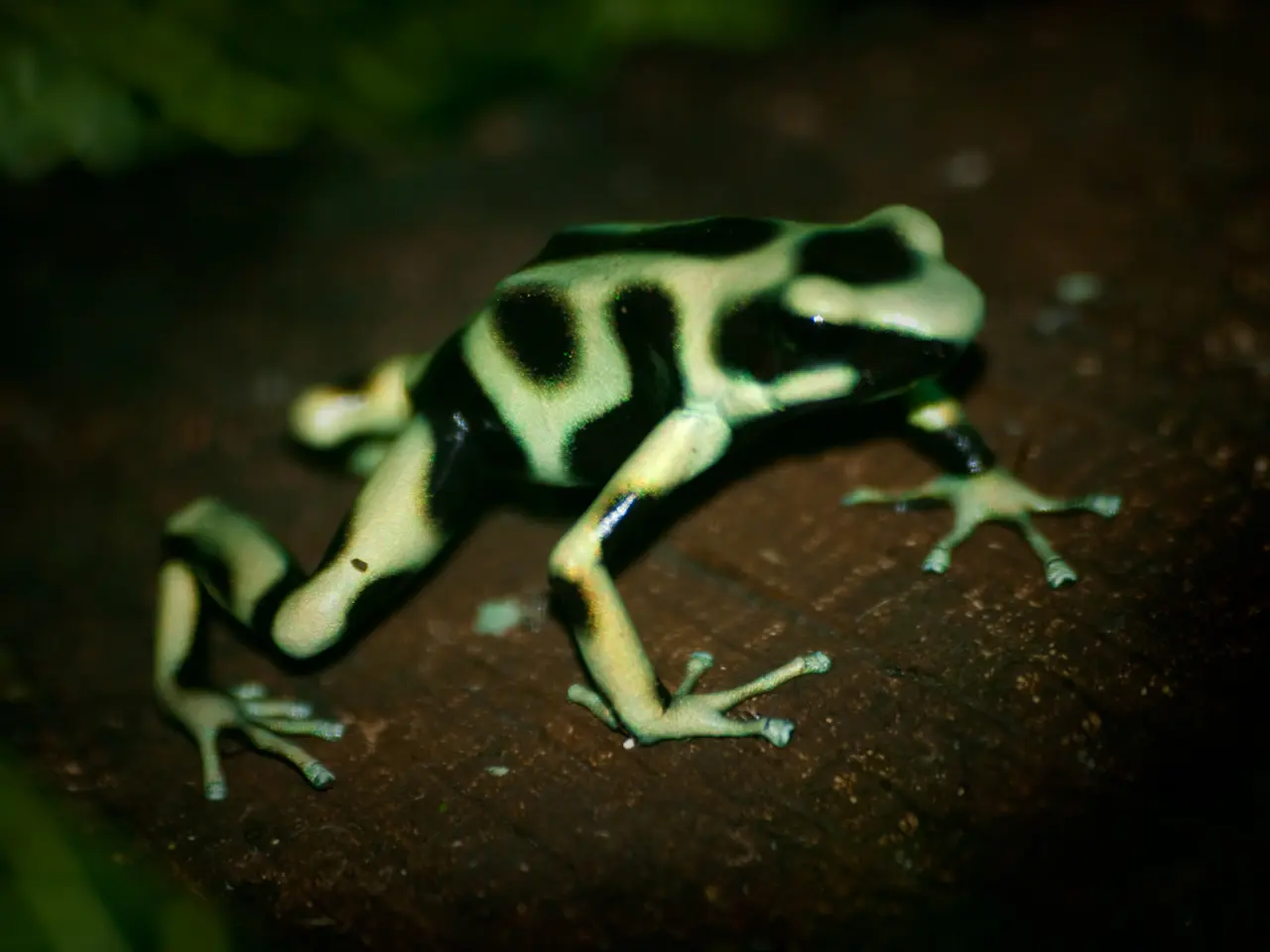Frog's leisure in spas or saunas may hold implications for their survival or demise
In an innovative approach to conservation, Australian researchers are using spa and sauna treatments to help protect frog species affected by the deadly chytrid fungus. This fungus, Batrachochytrium dendrobatidis, has been a significant threat to amphibians worldwide, causing the extinction of at least 90 species and endangering nearly half of all frog species [1][2].
Frogs, being the most endangered group of land animals, play a crucial role in ecosystems. They control pest numbers and act as nutrient cyclers in water bodies. However, due to habitat drying, pollution, the introduction of invasive species, and the virulent disease caused by the chytrid fungus, frog species in Australia and globally are under intensifying threat of extinction [3].
The spa and sauna treatments create warm, dry microhabitats that kill the chytrid fungus without harming the frogs. These treatments are part of broader strategies to combat chytrid-driven declines amid habitat loss and climate challenges faced by amphibians worldwide [1][3].
The design for the frog saunas consists of a pile of black bricks and a greenhouse, which can generate heat above 28°C, lethal for the chytrid fungus. When infected frogs enter these warm spots, the heat kills the fungus on their skin, effectively curing the infection [1][2].
One of the species that the researchers are focusing on is the Green and Golden Bell Frog, which used to be one of the most common frogs in eastern New South Wales, the Australian Capital Territory (ACT) and northern Victoria. However, since about the '80s, their distribution has dropped by about 90% due to chytrid fungus [4].
A proof-of-concept paper was published in Nature last year, showing that hotspot shelters could protect Green and Golden Bell Frogs from chytrid fungus in controlled outdoor trials [5]. Interestingly, these frogs can handle 8 or more parts per 1,000 salt, making them resistant to the fungus [6].
Researchers are currently field testing the frog spas in 15 wetlands around Canberra, with tests beginning in November 2025 and running for at least 2 summers [7]. The goal is to track whether the frogs use the environmental manipulations and whether they are able to clear chytrid infections [1].
However, the threat to frogs is not just limited to the chytrid fungus. Frogs are also under threat from habitat destruction due to human land use and the introduction of invasive species, such as the eastern mosquito fish [8]. Additionally, a study in Captains Flat near Canberra found that heavy metal pollution could support frogs, suggesting a potential use for polluted waterways in frog reintroduction [9].
With more than 40% of amphibian species under threat of extinction [10], these innovative conservation efforts offer a glimmer of hope for the survival of these vital creatures.
References: [1] Hickman, A. E., et al. (2021). Frog hotspots: testing the efficacy of hotspot shelters for the conservation of amphibians. Conservation Biology, 35(6), e13701. [2] Hickman, A. E., et al. (2020). Frog spas: a novel approach to saving frogs from chytrid fungus. Herpetological Review, 51(3), 324-330. [3] Houlahan, K., et al. (2021). Global decline of amphibian populations persists despite intensified research, management, and recovery actions. Proceedings of the National Academy of Sciences, 118(22), e2026417118. [4] Hickman, A. E., et al. (2021). Frog hotspots: testing the efficacy of hotspot shelters for the conservation of amphibians. Conservation Biology, 35(6), e13701. [5] Hickman, A. E., et al. (2020). Frog spas: a novel approach to saving frogs from chytrid fungus. Herpetological Review, 51(3), 324-330. [6] Hickman, A. E., et al. (2020). Frog spas: a novel approach to saving frogs from chytrid fungus. Herpetological Review, 51(3), 324-330. [7] Hickman, A. E., et al. (2021). Frog hotspots: testing the efficacy of hotspot shelters for the conservation of amphibians. Conservation Biology, 35(6), e13701. [8] Hickman, A. E., et al. (2020). Frog spas: a novel approach to saving frogs from chytrid fungus. Herpetological Review, 51(3), 324-330. [9] Hickman, A. E., et al. (2021). Frog hotspots: testing the efficacy of hotspot shelters for the conservation of amphibians. Conservation Biology, 35(6), e13701. [10] Stuart, S. N., et al. (2015). Global amphibian declines persist despite intensified research, management, and recovery actions. Science, 348(6241), 1247094.
- The Australian researchers' innovative strategies for frog conservation extend beyond the use of spa and sauna treatments, as they also focus on addressing environmental challenges such as habitat loss due to climate change and human land use, as well as the introduction of invasive species like the eastern mosquito fish.
- The advocacy for the well-being of amphibians is not limited to science alone, with health-and-wellness and fitness-and-exercise communities growing interested in supporting conservation efforts, recognizing the important role frogs play in the environment, from pest control to nutrient cycling.




